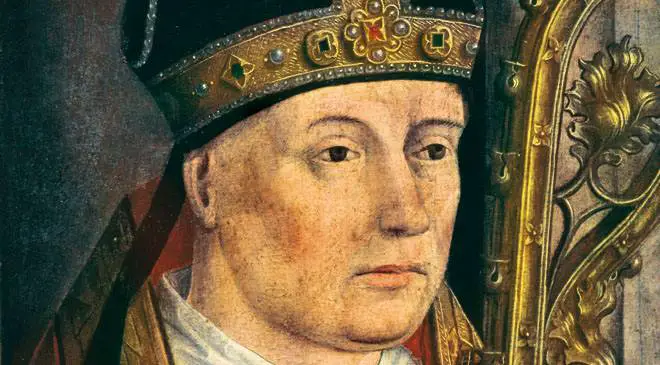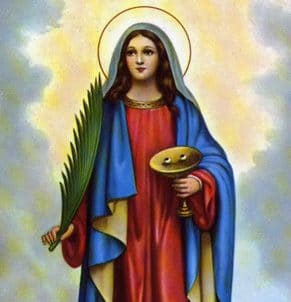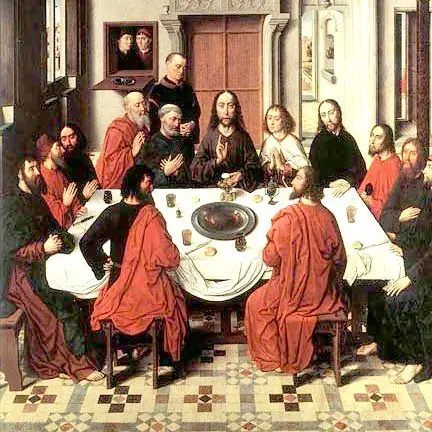In the first century BCE, Buddhist art was practiced in the transitional media of brick, wood, straw and bamboo, and stone was used extensively.
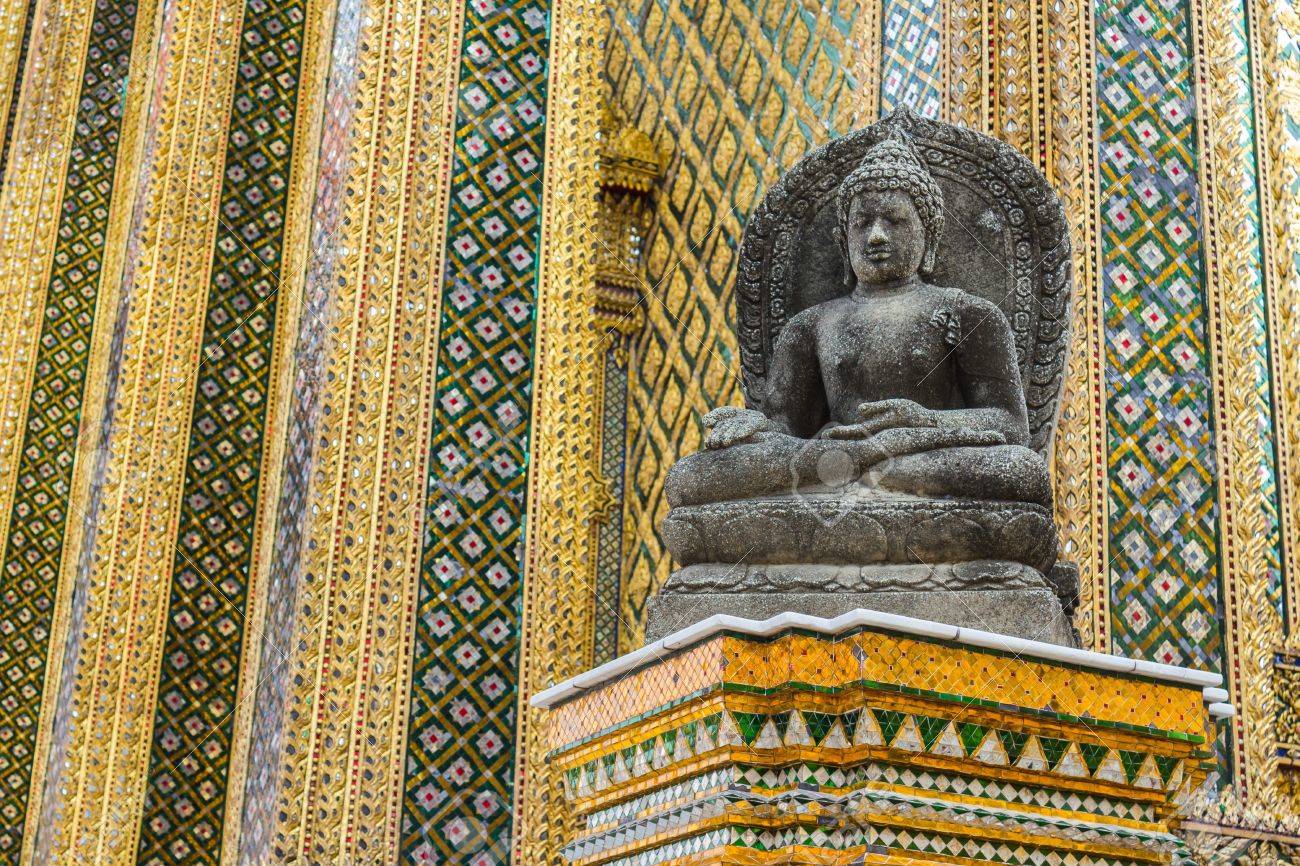
What is Buddhist art?
In the most archaic Buddhist art of India, the Buddha was not represented in human form. Instead, his appearance was represented by a figure, such as a pair of stickers, an unoccupied seat or an empty space under an umbrella.
In the first century AD, the human image of a Buddha began to supplant the attractive scene, and one of the first places where this happened was along the north-western border of India. In the area known as Gandhara, attractive compendia from the Hellenistic world combined with the precise symbolism of Indian Buddhism to create a magnificent style. The youthful Buddhas with their hair in wavy curls are considered to be Roman statues of Apollo; the monastic toga, draped over both shoulders and set in heavy classical plisses, resembles a Roman toga (see article: Life of Pope Francis).
Similarly, there are many forms of Siddhartha as a mainly bejewelled stampa before he retired to palace life. Buddhism developed the knowledge of a future Buddha, Maitreya, represented in art as a composite Buddha in monastic robes and as a magnanimous Bodhisattva before enlightenment. Gandharan artists used both stone and plaster to create such images, which were installed in niche-like shrines around the stupa of a nunnery. At the same time, Kushan period artists in Mathura, India, created a different image of the Buddha. His body was elongated by the sacred breath, and his monastic robes were stretched so that his right shoulder was exposed to the manifest.
https://www.youtube.com/watch?v=8iVusTvWLjg
A third type of prestige Buddha developed in Andhra Pradesh in southern India, where images of essential symmetry, with serious, expressionless faces, were draped in robes that formed a large pouch at the hem, revealing the left shoulder. These southern areas provided artistic inspiration for the Buddhist area of Sri Lanka, in the extreme south of India, and Sri Lankan religionists regularly visited the area. Various statues of this genre have also been found throughout Southeast Asia.
With their downward visual and subjective aura, the Gupta Buddhas became the model for future virtuous offspring, whether in post-Gupta and Pala India or in Nepal, Thailand and Indonesia. The Gupta metal iconographies of the Buddha were also picked up by outsiders along the Silk Road to China. In the centuries that followed, a new form of Buddhism emerged, with an expanding pantheon and more constructed rituals.
Later Buddhism introduced the notion of divine bodhisattvas and goddesses, the most famous of whom was Tara. In Nepal and Tibet, where exquisite metalwork and nuanced painting originated, new deities were implanted and embodied in sculpture and painted scrolls. Fierce representations were cast in the role of defenders of Buddhism and its practitioners. Images of a more esoteric habitat, depicting God and Goddess in a squeeze, were produced to manifest the metaphysical impression that salvation resulted from the union of consciousness and compassion. Buddhism had come a long way from its simple beginnings (see article: Christian marriage vows).
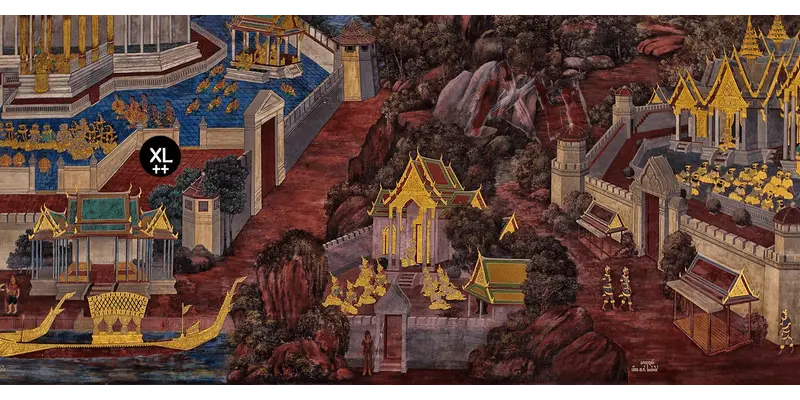
Characteristics of Buddhist art
While Buddhism emerged in India with a rich variety of religious imagery, ancient Buddhist art almost naturally avoided runes depicting the Buddha. Instead, he and his illustrations were embodied by symbols, including
- The Wheel of the Law, or Dharmacakra, the emblem of the Four Noble Truths formulated by the Buddha.
- The Bodhi tree, the tree under which the Buddha attained enlightenment. It has some status in the propagation and character cults of the Tree of Life.
- The Buddha’s footprint, also known as Buddhapada or “Buddha’s feet”, to represent the impact of the Buddha’s images in the universe.
- The empty throne.
- The lions, emblems of his splendour. During Ashoka’s reign, the Buddha was known as the “Shakya Lion”, and this insignia was used on the Buddhist pillars he planted throughout India.
- The pillars end in a wheel, the hallmark of his teaching.
- The Lotus, symbol of the Buddha’s pure and immaculate nature, because of its graceful bloom and the difficulty of water to encrust it, leaving it perfect.
As Buddhism spread outside India from the 1st century AD, its unusual artistic envelope came into harmony with other artistic authorities, leading to a growing difference between the countries that embraced the faith.
- A northern route was established from the 1st century AD to Central Asia, Tibet, China, Korea and Japan, where Mahayana Buddhism predominated.
- A southern route, dominated by Theravada Buddhism, crossed Myanmar, Thailand, Cambodia and Vietnam (see article: Islam in Mexico).
The march of Buddhist imagery over the six centuries from 350 to 950 was sealed by the advance of Chinese practices such as the Pure Land, centred on the Buddha Amitabha, the Bodhisattva Avalokiteshvara and the Chan. The Pure Land ideology emphasises piety and faith as the blueprint for enlightenment, while Chan introduces meditation and mindfulness into everyday life. These two traditions also flourished in Korea and Japan.
In the ninth century, new deities were introduced into China from India and Central Asia. These included the worship of the heavenly Buddha Vairocana, new iconographies of bodhisattvas such as Avalokiteshvara, and the vision of cosmic schemes such as ‘mandalas’. Chinese Buddhist sculpture was greatly influenced by foreign models. For example, works with energetic bodies and thin clothing come from Indian painting and figure painting, while works with thin bodies and thick clothing come from the Chinese tradition.
Many Buddhas and Bodhisattvas dwell in a mixture of these sensory types. When Buddhism disappeared from India after the 11th and 12th centuries, Buddhist temples and nunneries in China, Korea, Japan and the Himalayas served as important centres for the continued development of Buddhist visual art in all its collections. (See article: Jesus and Islam).

In China
Buddhism arrived in China around the 1st century AD and introduced new forms of art to China, especially statuary. The adoption of this distant religion gave Buddhist art a strong Chinese flavour.
In the fifth and sixth centuries, the northern families used more emblematic and abstract forms, with synthetic lines. Their style is also said to be emphatic and sumptuous. The lack of corporeality of this art, and its departure from the unusual Buddhist goal of formulating the pure ideal of enlightenment in an attainable and balanced way, gradually led to a shift towards more materialism and realism, which led to the exhibition of Tang Buddhist art.
Sites collecting Buddhist sculpture from the Northern Wei dynasty include the Longmen Grottoes, Henan, Bingling Temple and Gansu. After an evolution under the Sui dynasty, the Tang Buddhist figure developed into a remarkably realistic expression. With the opening of the dynasty to foreign authorities and the renewed exchange with Indian culture due to the extensive travels of Chinese Buddhist monks to India, the Buddhist figure of the Tang dynasty took on a very classical form, inspired by Indian art of the Gupta period.
During this period, the Tang capital of Chang’an became a major centre for Buddhism. From there Buddhism spread to Korea, and Japanese delegations from Kentoshi helped to consolidate it in Japan. By the end of the Tang dynasty, however, foreign influence in China was reluctant. In 845, the Tang ruler Wuzong banned all foreign religions, including Nestorian Christianity, Zoroastrianism and Buddhism, in order to reaffirm the indigenous religion of Taoism (see article: Muslim expansion).

He confiscated Buddhist property and drove the faith into lawlessness, shattering the progress of the religion and its arts in China. However, Chan Buddhism continued to flourish for several centuries, especially during the Song Dynasty, when the Chan nunneries were great centres of culture and learning. The popularisation of Buddhism in China has made the country home to one of the finest collections of Buddhist art in the world.
The Mogao Caves near Dunhuang and the adjacent Bingling Temple Caves of Yongjing in Gansu Province, the Longmen Grottoes near Luoyang in Henan Province, the Yungang Grottoes near Datong in Shanxi Province, and the prehistoric Dazu Sculptures near Chongqing Municipality are among the most significant and recorded Buddhist sculpture sites. The Leshan Giant Buddha, carved into a hillside facing the confluence of the three rivers in the 8th century Tang Dynasty, remains the most magnificent stone Buddha in the world.
Sculpture
The most sought-after Buddhist sculptures today tend to be gilded bronzes, with certain periods being particularly attractive to the market. For example, the early Ming dynasty up to the reign of the Yongle and Xuande emperors, Tibetan gilt bronzes from the 15th century, Licchavi and Nepalese figures from the Malla period, and early Qing dynasty works command high prices.
Chinese Buddhist sculpture continues to illustrate the exchange between China and other Buddhist centres. Works with powerful bodies and scrawny clothing come from Indian models, while sculptures with slender bodies and thick clothing make a Chinese statement. Many combine these sensual traditions. After the 11th and 12th centuries, when Buddhism fled India, China and its centres in Korea and Japan, as well as those in the Himalayas, served as concentric points for the relentless development of skill and imagery.
Korean Buddhist sculpture is one of the transcendental planes of Korean art. Some of the finest and most technically accomplished Buddhist figures in East Asia and the universe come from Korea. Images of the Buddha may have been first adapted by monks sent from China, and Korean Buddhist sculpture is in trance with prototypes used in India, Central Asia and China. A characteristic Korean style has developed from these attributions (see article: Customs of Islam).
Korean Buddhas generally have Korean facial features, conform to indigenous carvings and sculptural inventions, and use few of the motifs used earlier in Buddhist art. Together, Korean artisans brought together different styles from different regions with their own tastes to form an indigenous artistic practice. Korean art is often mistakenly described in Western literature as merely a passive bridge between Chinese art and Japan.
Painting
There are still striking examples of Tibetan shrine murals in Tibet itself, as well as in Tibetan cultural areas in India, Himachal Pradesh, Nepal and Bhutan. However, the most respected painting medium outside Tibet is thangka, or skin painting. Usually painted on cotton cloth, more unusually on silk, the colours are historically made from solid and vegetable dyes.
Before concentration, they are desaturated to varying degrees in lime and combined with Arabic gum. These “stone” colours retain their energy so well that some archaic thangkas still contain extraordinary colours. Nowadays, Tibetan artists also use fresh synthetic dyes. Thangkas are traditionally mounted on silk embroidery strips with a stick or ribbon at the top and bottom for easy hanging. The thangka can also be folded flat for easy storage or transport from one place to another.
Travelling lamas used them as icons of personal contemplation and to adorn the tents in which they gave teachings of the Buddhist school. They are also used as effective teaching aids. In most Tibetan homes, the thangka, along with bronze statues of girls, is a common part of the family altar and a visual Dharma chariot. The scriptures are also often decorated with miniature paintings, as are their wooden cases and sets of initiation tokens called tsakali, which are another form of reduction painting (see article: Islam and the Qur’an).
Buddhist art in India
Although India has a long tradition of sculpture and a rich iconography, the Buddha was not personified in human form in the early centuries of Buddhism. This tendency towards anthropomorphic scriptures of the Buddha and the ingenious development of aniconic emblems to prevent this, even in the historical scene where other human labras would appear, seems to correspond with the Buddha’s sayings, communicated in the Dighanikaya, that he despised the scriptures of himself after the decay of his body.
This tendency continued until the 2nd century. Century in the art of the Amaravati Academy. The preliminary anthropomorphic scriptures of the Buddha may have been made of wood and may have been lost. However, there is no archaeological evidence to support this.

What developed in place of the carved iconographies of the Buddha was a rich cycle of aniconic art in which the Buddha and his precepts were constituted by various symbols. Some of these common emblems were, for example, the footprint, which represented, among other things, the Buddhist discipline of anitya, impermanence, an unoccupied throne and the wheel of dhamma.
Anthropomorphic Buddha scriptures began to appear in northern India from the first century BC. During the 2nd and 1st centuries BC, sculptures symbolising episodes from the Buddha’s life and teachings became more conspicuous. These took the form of votive tablets or friezes, usually in conjunction with the decoration of stupas. The two main centres of creation were paired as Gandhara in modern Punjab, Pakistan, and in the Mathura area of north-central India. (See article: Mosques)
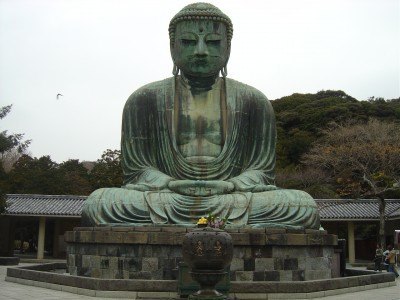
Gandharan art benefited from centuries of interaction with Greek teaching since the conquests of Alexander the Great in 332 BC and the subsequent union of the Greco-Bactrian and Indo-Greek kingdoms, which led to the advancement of Greco-Buddhist art. The Buddhist sculpture of Gandharan shows Greek artistic attribution, and it has been suggested that the perception of the ‘god-man’ was basically inspired by traditional Greek culture. Artistically, the Gandharan school is said to have contributed wavy hair, draperies covering both shoulders, shoes and sandals, acanthus leaf ornaments, among others.
Mathuran art developed into a strong Indian practice, illustrated by the anthropomorphic script of deities such as the Yaksas, albeit in a more archaic quality in assimilation with later Buddha scriptures. The Mathuran school favoured dress with the left shoulder covered with a thin cloth, the volatile in the palm, the lotus couch, among others.

Mathura and Gandhara also interacted vigorously with each other. During their artistic heyday, the two regions even united politically under the Kushans, both of whom were indispensable to the empire. It is still debated whether the anthropomorphic scriptures of the Buddha were essentially the result of a local Buddhist artistic manoeuvre in Mathura, or a derivative of Greek cultural authority in Gandhara through Greco-Buddhist mediation.
From the outset, this iconic art was determined by a sensitive idealism that conceived of objective human traits, cadences, attitudes and attributes, together with an antithesis of perfection and wholeness that reached the divine. This locution of the Buddha was reconciled in the emblematic canon of later Buddhist art.
The pink sandstone images of Mathura were developed during the Gupta period to achieve a very high fidelity of execution and delicacy of relief. The art of the Gupta school was highly regarded in most of the rest of Asia. By the 10th century, the establishment of Buddhist art in India was dying out as Hinduism and Islam came to dominate.
Tibetan Buddhist Art
Buddhism was established in Tibet in the 7th century and was proclaimed the religion of the course in the late 8th century. Although Buddhist affiliation declined during the sieges between 838 and 942, the religion enjoyed a renaissance from the late 10th century. It quickly established itself as the dominant religion and began what is known as the later spread of the Buddhist faith. During the first few hundred years of this uninterrupted interest, several monks from Tibet travelled to India, the home of Buddhism, to learn the religion, and Indian scholars were present in Tibet to lecture and teach (see article: Mahayana Buddhism?).
Although the vast territory of Tibet and its many adjacent neighbours, India and Kashmir, Nepal, the northern districts of Burma, China and Central Asia, are conspicuous in the rich stylistic variety of Tibetan Buddhist art, during the late eleventh and early twelfth centuries Pala India was the primary source of artistic authority in India. Primary source of artistic authority. From the thirteenth century onwards, Nepalese artists also took up the debt of painting tangkas and making figures for Tibetan patrons. In the 14th century the stylistic authorities of Nepal and China became dominant, and in the 15th century they united in an effective Tibetan recapitulation.
Although many monks were artists, there were also lay artists who moved from monastery to monastery and, with some irregularities, it is difficult to attribute a single style to any one monastery or sect. Most of the artists were unknown and their works are rarely attested, although their names have survived in texts, murals on monastery panels and on some tangkas and bronzes. In addition to Tibetan virtuosos, the names of Indian, Nepalese, Central Asian and Chinese artists are known.
Various sculptures and sketches were made as aids to Buddhist reflection. The mechanical image was reconciled into a basis for assembling or encouraging the appearance of divinity constituted in the mind of the enthusiast. Images were also praised for various reasons, such as celebrating a birth, commemorating a death, and promoting wealth, good health or longevity. Buddhists believe that entrusting an image contributes merit to both the detached and all sentient beings. Images in shrines and family shrines also remind lay people that they too can attain enlightenment.
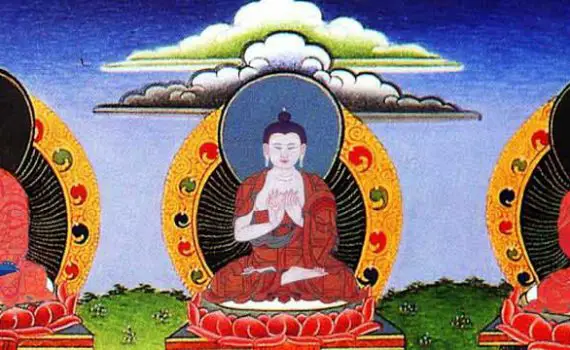
Zen Buddhist Art
Through the experience of many Japanese arts, many of the moral and subjective goods of Zen were instilled and transmitted in Japan. During the long period of Japan’s self-imposed seclusion, artistic performances developed in a concretely Japanese way, and several of these art forms were strongly influenced by Zen Buddhism.
All Japanese art forms, such as chado, ikebana, shodo, and even martial arts, were strongly influenced by the great philosophy of Zen. These art forms have been transformed by Zen into a spiritual way of life that focuses on tranquillity, simplicity and personal growth. In Japan there is a practice of learning art not only for art’s sake, but also for spiritual reasons. When practiced with the Zen compendiums in mind, art can be a peaceful journey and an exercise in self-cultivation that leads to tranquillity, wholeness and unity.
Zen instruction in the arts is grouped under the category of mind-body unity, which is fundamental to the mastery of each art. While practising the art with a Zen quality, the mind remains in the now, fully aware of the fictitious nature of material life. It is perhaps true to say that without Zen, Japan might never have achieved its high level of care and labour in the arts (see article: Buddhism and Meditation).
Although Zen was originally imported from China, its aesthetic counterpart is very different from Chinese ideas of beauty. Zen has a unique ornamentation that includes a high regard for moderation, asymmetry, decay, rusticity and naturalness. This Zen notion of ornament is called Wabi-sabi, and sees beauty in things that are flawed, impermanent and fragmentary. In art, wabi-sabi is expressed in modest, unassuming, unfussy and tangible works of art.
Wabi-Sabi is justified, humble and deeply connected with love for the environment. The wabi-sabi values of ruggedness, elegance, uncluttered taste and purified beauty have enlightened Japanese artists for centuries and continue to inspire artists today.
Zen has a deep respect for nature and regards it as sacred. It does not seek to manipulate or control nature; rather, in permutation, Zen declares itself to be in a deep spiritual relationship with nature. This can be seen in various forms of Japanese art, and is especially important when looking at Zen gardens.


